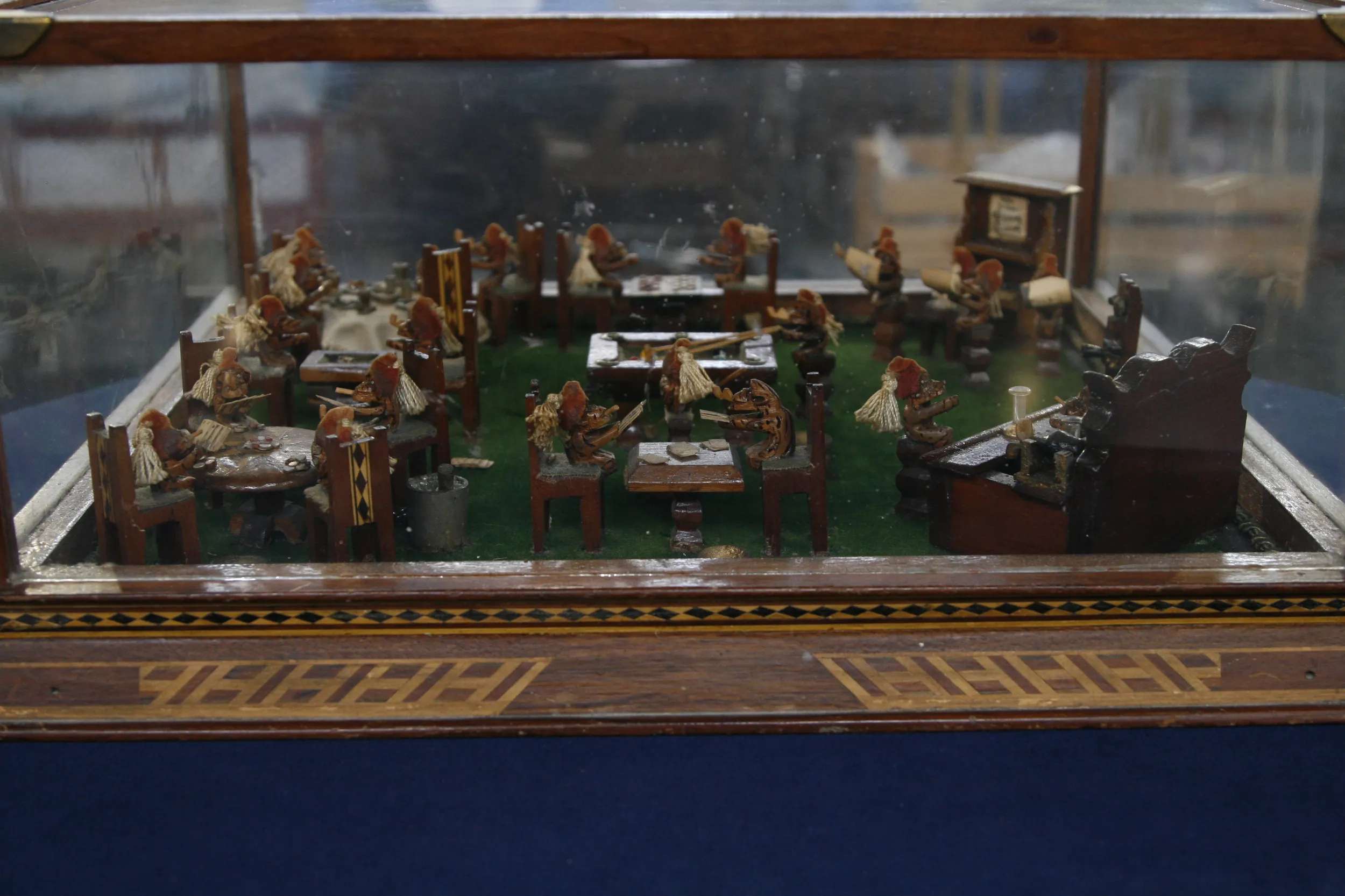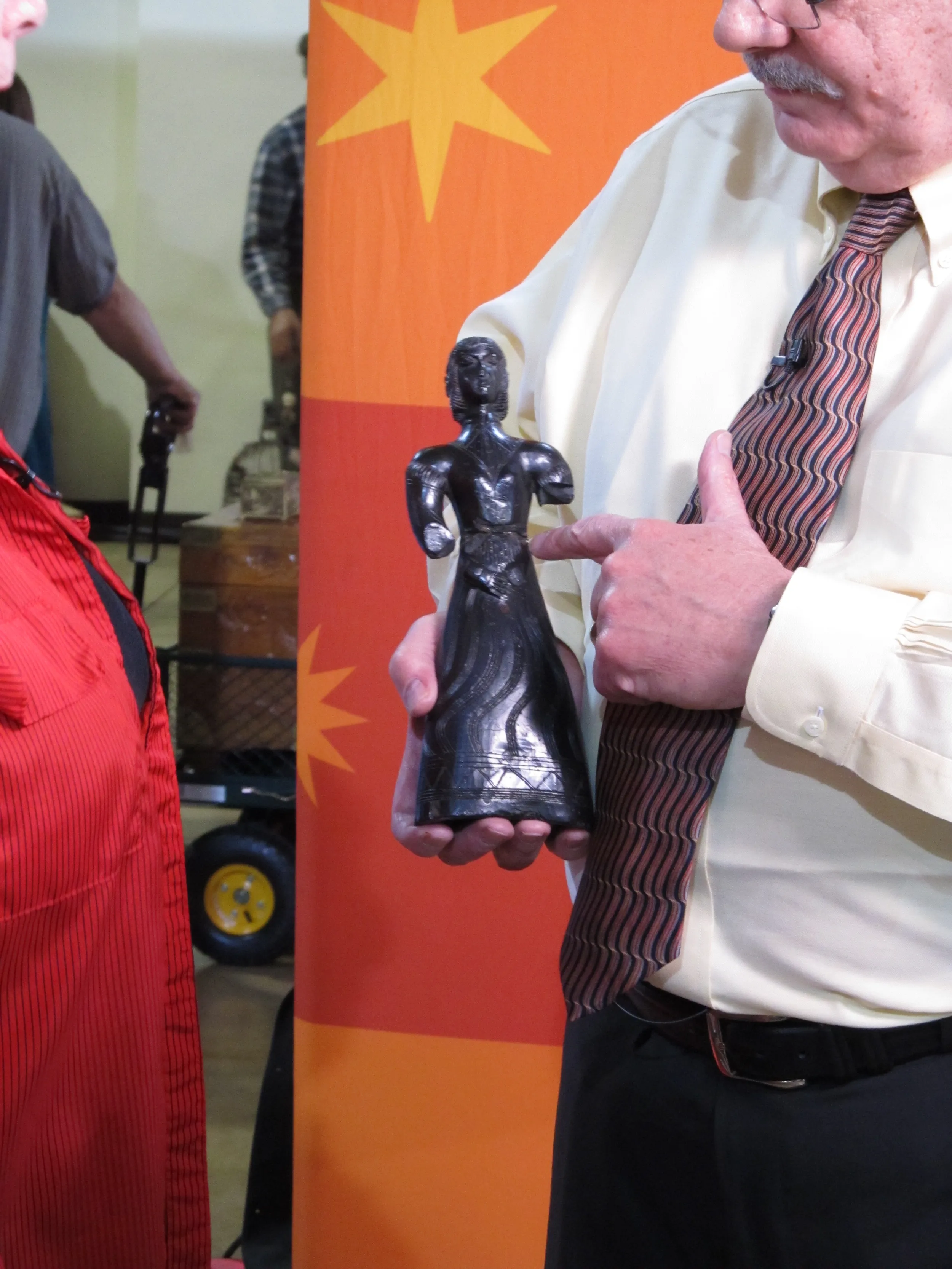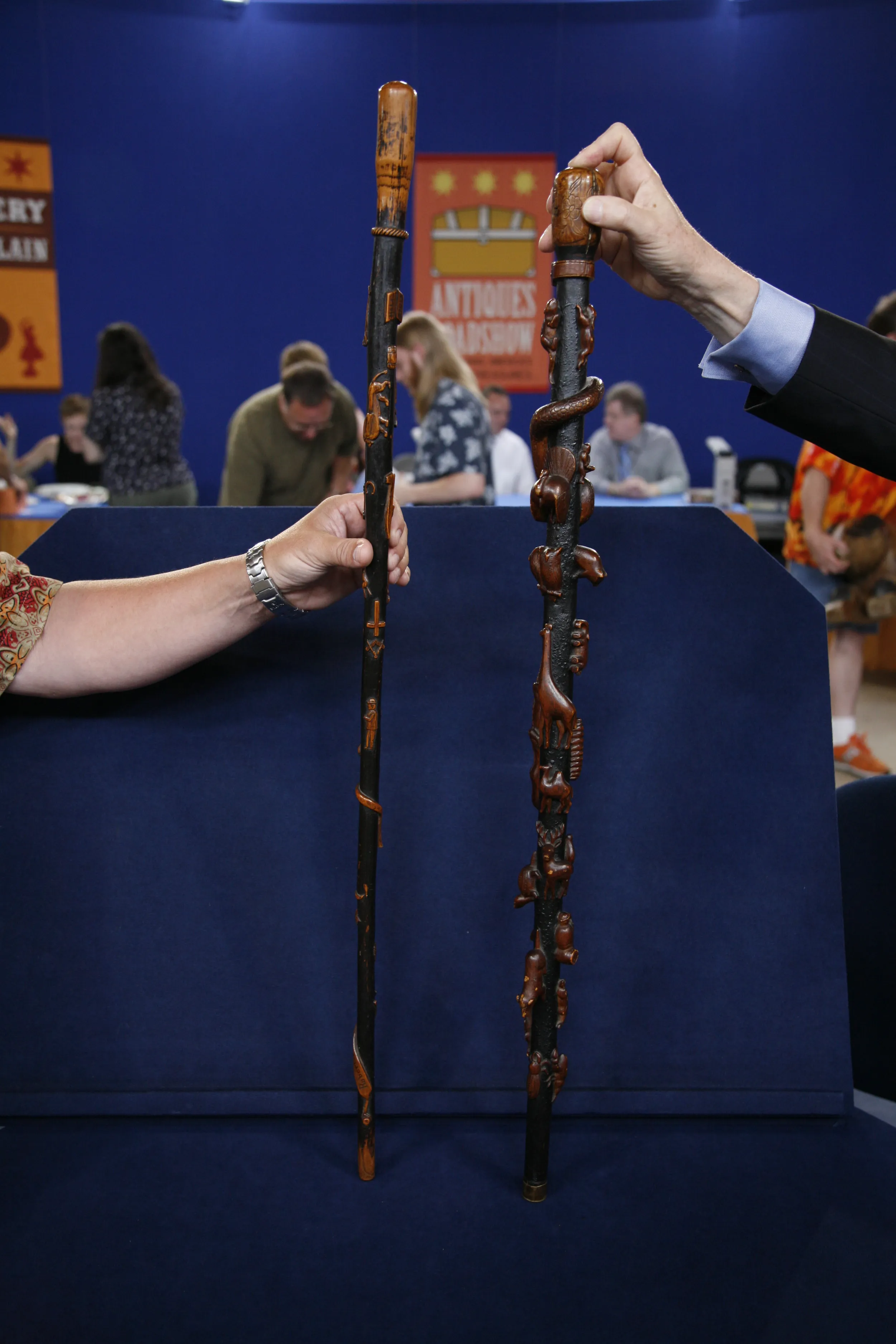GUEST: My aunt passed away recently. And in the late '70s, she came to visit me in Texas. And we went to an antique show, and we saw this horse's head, but it was painted dark brown, and someone had rubbed green over it. So she had it in her attic all these years. And I decided to strip it down when she passed away. I, I wanted to see what kind of wood was underneath.
APPRAISER: Right.
GUEST: And when I stripped it, this was what was underneath, and I can't imagine anybody putting brown paint over this, but that's what was there when I stripped it off.
APPRAISER: Didn't you tell me they were asking $75 for it?
GUEST: Yes.
APPRAISER: She got them down to $50?
GUEST: $50. She said, "If you come back the third day of the show and nobody's bought it, I'll give it to you for $50," and that's what she paid for it.
APPRAISER: Wow. The way they made these things...
GUEST: Uh-huh.
APPRAISER: ...was they made them... Of course it's carved out of wood.
GUEST: Yes.
APPRAISER: And... You can see that there's several different pieces of wood laminated together here.
GUEST: Yes, I saw...
APPRAISER: And this is the head off of a carousel figure.
GUEST: Carousel.
APPRAISER: The thing that makes it so wonderful is the details in the carving, like this really nice, flowing mane. I love the open mouth, and in horse talk, he's, he's short in the tooth, so he's still pretty young.
GUEST: Oh, is that what that... oh, okay, I didn't know that's what it meant.
APPRAISER: And you got glass eyes and the jewels here, but this was made during the peak time of production, especially in the Philadelphia area.
GUEST: Uh-huh.
APPRAISER: Probably 1890 to 1910, somewhere in that time period.
GUEST: Oh.
APPRAISER: The further they got in their production, the more demand there was for the figures. As the carvers aged and there weren't people coming in with the same level of skill, then the quality level of what they were doing dropped.
GUEST: Oh, oh, I see.
APPRAISER: That's why I say this is from the golden time. I know you're not a professional restoration person...
GUEST: No.
APPRAISER: But the quality of the job that you did taking that overpaint off is amazing. You saved all this craquelure.
GUEST: Yes.
APPRAISER: You must have just done it painstakingly slow, a little bit at a time.
GUEST: I did, yes, I did.
APPRAISER: You know, the thing that always draws us into objects...
GUEST: Uh-huh.
APPRAISER: ...is quality and eye appeal.
GUEST: Yes.
APPRAISER: And in, in the case of folk art and things like that, surface. I bounced this off my colleagues and we feel very comfortable.
GUEST: Uh-huh.
APPRAISER: This would sell for $2,000 or $3,000.
APPRAISER: Without a doubt.
GUEST: Oh. Oh...
APPRAISER: Without a doubt.
GUEST: Oh, well, I... Oh, well, I'm, I'm thrilled. I think it's so pretty.
APPRAISER: I think he's wonderful.










